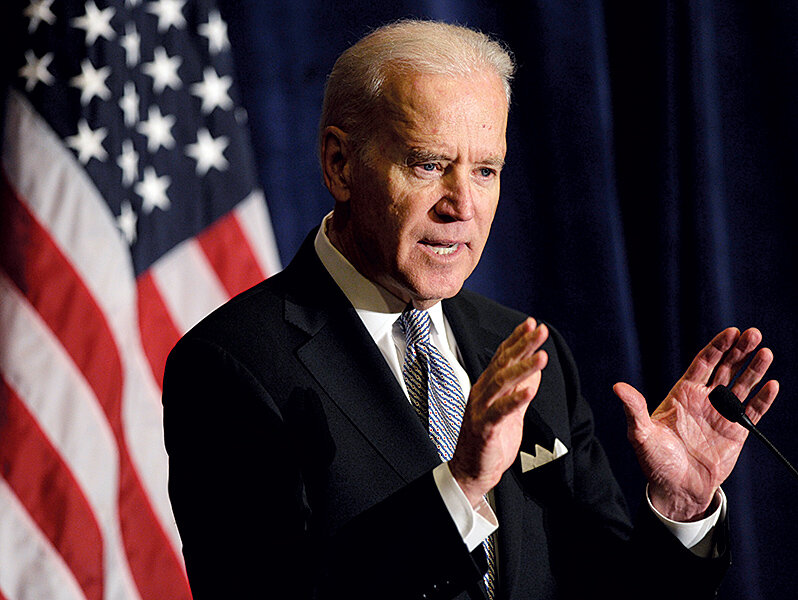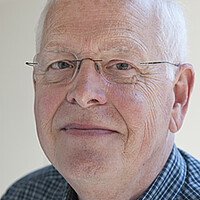Good Reads: From Joe Biden's next steps, to a Fox News challenger, to backpack nukes
In “Joe Biden in Winter,” Politico Magazine’s Glenn Thrush provides an insightful look at Vice President Joe Biden, his continuing political aspirations, and what Mr. Thrush describes as the “scratchiness” of Mr. Biden’s relations with President Obama.
Biden’s political dilemma can be seen in the comments of his friend, Ohio former Gov. Ted Strickland. “I’ve been around a lot of politicians in my life and Joe’s really the most extraordinary, the most honest, the most authentic in a lot of ways,” Mr. Strickland says approvingly. But then he adds, “But obviously I remain devoted to Hillary.”
With a recent Washington Post/ABC News poll showing Hillary Rodham Clinton leading Biden by an epic 73 percent to 12 percent, Biden finds himself having climbed the political ladder almost all the way to the top. “And guess what? Somebody moved the ladder,” an Obama administration insider tells Thrush. “How would you deal with that?” This article provides some clues.
Planning the next Fox News
Christopher Ruddy runs Newsmax.com, which gets the most traffic among conservative websites, and in June he plans to launch a TV network to challenge the conservative news monopoly of Fox News. The Florida-based entrepreneur is profiled by Karl Taro Greenfeld in the March 10-16 issue of Bloomberg Businessweek.
Mr. Ruddy’s clever business model includes selling a wide variety of newsletters and vitamin supplements to his website’s conservative readers. Unlike Fox News and other cable outlets, Ruddy does not plan to charge cable operators for his new TV network, but instead plans to actually pay them to carry it and make money selling the same items he hawks on his website.
The combination of running a website that received 11.5 million visitors in January and owning a list with the e-mail addresses of 5 million conservatives has made Ruddy a power in conservative politics. But Ruddy describes himself as “not as far to the right” as Fox News chief Roger Ailes. And he has an unlikely friend: former President Bill Clinton. He has given to the Clinton Foundation and says he thinks Hillary Rodham Clinton would be a good president.
A killer’s father searches for answers
The father of Adam Lanza, the young man who killed 20 young students and six school personnel in December 2012, contacted journalist and author Andrew Solomon as the first anniversary of the Sandy Hook Elementary School shooting approached. The resulting article in the March 17 issue of The New Yorker is an effort to illuminate the causes of the second deadliest mass shooting by a person in US history.
Mr. Solomon says that Peter Lanza’s motive for talking about his troubled son was to share information that might help the victims’ families or prevent another tragedy. “I need to get some good from this. And there’s no place else to find any good,” he told Solomon.
Solomon wrote the widely hailed book “Far From The Tree: Parents, Children, and the Search for Identity” about parents dealing with children with exceptional challenges. He brings to his current assignment both compassion and clear-eyed reporting.
When soldiers carried nukes
Whatever tensions exist between the United States and Russia over issues like Ukraine and Syria, they seem a bit less threatening after reading Adam Rawnsley and David Brown’s report in Foreign Policy about “The Littlest Boy” – a nuclear bomb designed to be carried on the backs of American military personnel into Warsaw Pact countries between 1964 and 1989. The theory behind the 58-pound backpack nukes was that they would give the American president a less drastic option than an all-out nuclear war if communist forces – which badly outnumbered NATO troops – launched a limited, nonnuclear attack.
The authors used newly declassified documents obtained through Freedom of Information Act requests to study the Special Atomic Demolition Munition. Their conclusion: “America’s post-Hiroshima mastery of the cutting-edge science of atomic destruction had filled weapons designers more with a sense of the possible than the prudent.”
The power of fraternities
Caitlin Flanagan spent a year studying fraternity life on the modern American campus. Her report in the February issue of The Atlantic is lengthy, rich with detail, and cleverly written. It also contains occasional descriptions of bizarre activities by inebriated students that are not for the squeamish.
The subject is worth exploring because of the need to reduce the spate of injuries, assaults, sex crimes, and deaths linked to fraternities. Greek fraternities are a big business, housing 1 in 8 students at four-year colleges and owning property worth an estimated $3 billion. Given their role in attracting students and providing housing that universities might otherwise have to build, “in many substantive ways, fraternities are now mightier than the colleges and universities that host them,” Ms. Flanagan says.
There is a lot here to cause parents to take a deep breath, including the fraternity industry’s efforts to shift liability from the fraternity chapter to the individual student in case of a lawsuit. “I’ve recovered millions and millions of dollars” from parents’ homeowners’ insurance policies that way, one lawyer told the Atlantic.







